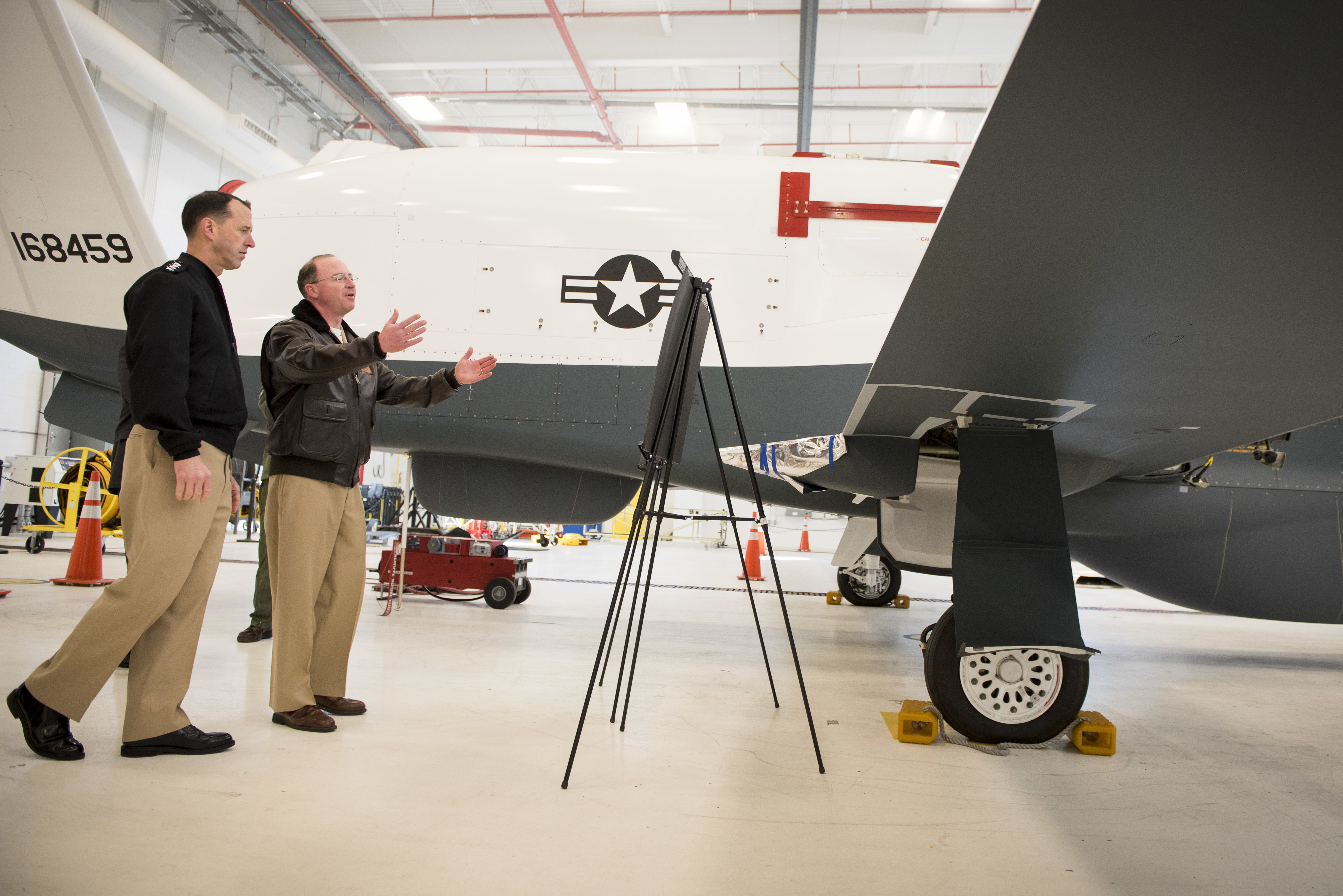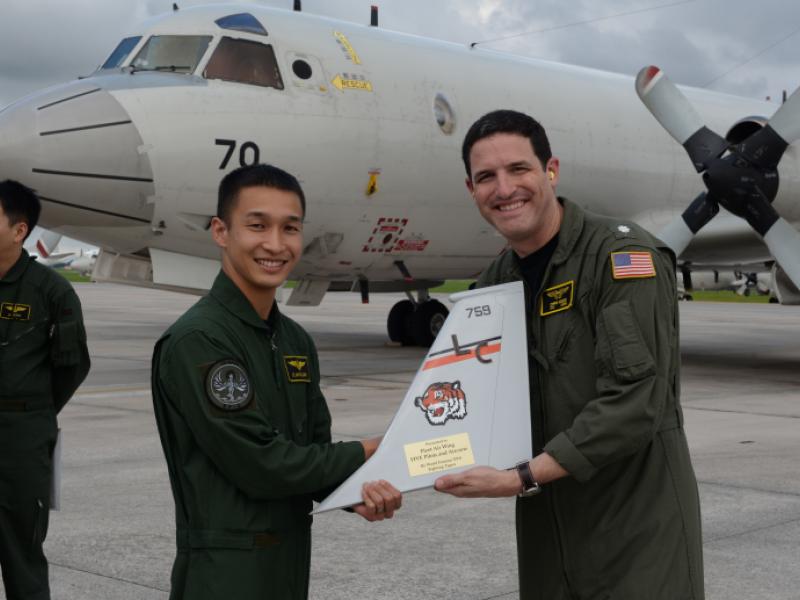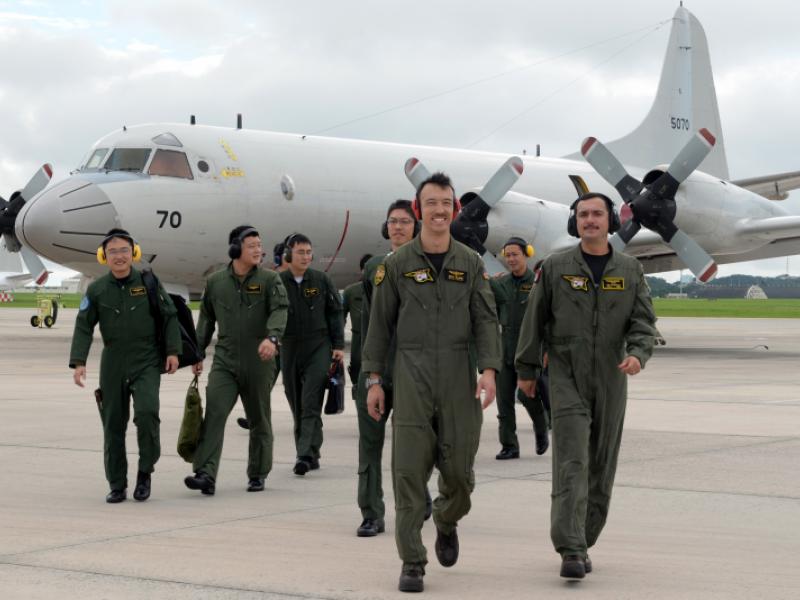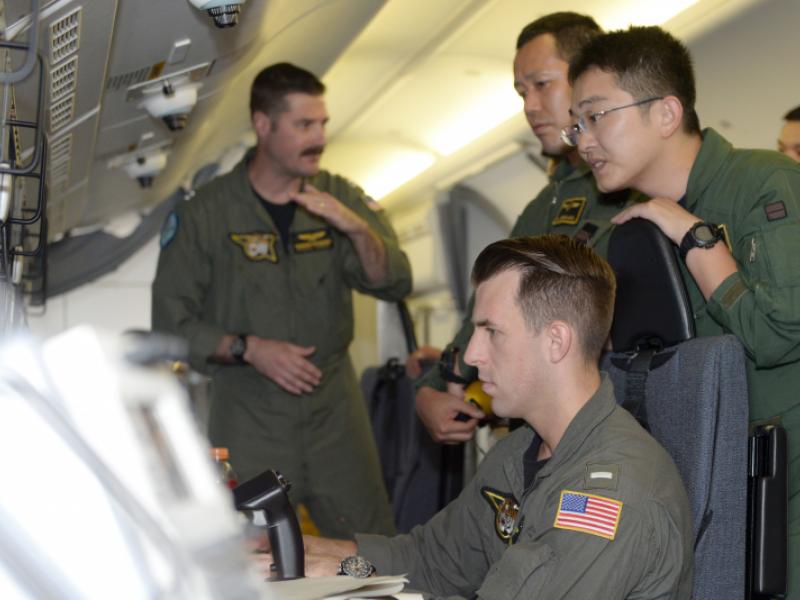2016-06-08 By Ed Timperlake and Robbin Laird
The US Navy is building a new Maritime Domain Awareness strike capability with the P-8/Triton dyad.
To move from a program which exists on paper to one which exits in practice is a challenge.
And to do so, the role of a person like Senior Chief Patrick R. Biddinger (AWOCS) is crucial.
The challenge is to take experienced personnel and put them into positions to guide the newcomers to the enterprise, but to blend the old with the new in an innovative manner.
There is a lesson often learned at the Naval Academy that probably is not part of an official curriculum but often discussed at the First Class Capstone program for soon to be commissioned Navy Ensigns and USMC 2nd Lts .
A newly graduated Ensign arrives at the first command. The CO gives the Ensign and his sailors an order to physically accomplish a task. The Senior Chief asks the Ensign if he has ever done the task before. “No chief but I went to Annapolis and can read up on how to do it and then get it done.” The Chief Says with all due respect:“No Sir you do know how to do it.” “How?” asks the Ensign. “Simple you say “Chief you and the sailors do it”—“and sir that is how you will then learn.”
There is a clear challenge when moving from the P-3 to the P-8/Triton dyad.
It is a key step into the 21st Century fighting Navy digital age where software upgradeable and information rich platforms are built from the ground up to be integratable with the fleet and are replacing the P-3 which was much a single unit platform operating “fearless and alone” in executing the core ASW mission.
Although, it is noteworthy that the P-3 community served with distinction over land flying in combat missions during periods of the US and Allies ongoing Middle Eastern wars.
When we discussed the program, its origins and how far it has come, the pride of the Senior Chief (who is part of VP-16) in his colleagues was clearly evident.
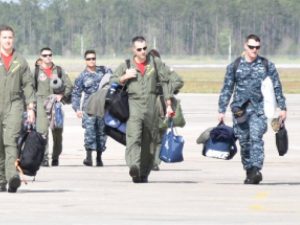
As he put it: “I don’t have children, but if I did I could imagine this would be like having a child and raising it and watching it grow up and go off to college and be successful.”
We made the point that until an air system has operated for 10 years, one really does not have the full measure of the program.
He added: “Even if I make master chief next year, I’ve only got four more years before I’m retired at 30. When this platform hits its ten-year anniversary I won’t be in the Navy anymore. I’ll just have to reach back to some of my friends who are a little bit younger than me and get some good sea stories from them about the progress.”
He noted that he has been with the program prior to the first plane arriving in Jacksonville in March 2012 and that the “plane has been in the fleet only four years, and in five years it will be better and at 10 years its going to be phenomenal.”
His background is with both the P-3 community as well as the test community. He has significant combined fleet operational and test experience within the maritime patrol community. Senior Chief Biddinger career experiences have been crucial in shaping his leadership role with the team standing up the aircraft and doing its initial operations.
During his deployments to Iraq with the P-3, he worked with his squadron to get upgrades crucial to the performance of the aircraft in its overland mission. After his deployment in Southern Iraq, he then came to Jacksonville to work on the P-8 in October 2008.
In other words, he came prior to the airplane and was part of the effort of moving from briefing charts to operational capabilities.
“The P8 fleet integration team was a very, very small team in the beginning. It was literally a handful of officers and a handful of enlisted folks. And the leadership backed the team in terms of allowing the team to innovate and experiment in setting up the baseline squadron at Jax.”
He noted that from the beginning, the Navy recognized the importance of standing up the plane and the training systems, given how important simulators were going to be to the program.
“The idea at the outset was that 30% of your training was going to take place on the aircraft and 70% in the simulators. We were testing simulators and accepting simulators BEFORE we received our first aircraft.”
As with others we interviewed, Senior Chief Biddinger focused on the challenge of the new workflow with the operators on the rail as opposed to operating in separate or cubicle like workstations. “Every station is capable of doing the same thing. If you are on the rail, then you don’t have people just oddball placed throughout the airplane. You have a shared workflow.”
He praised the younger generation for their ability to absorb information.
“Today’s generation is more gadget-oriented, and technologically advanced than my generation.”
But he cautioned that a major task remained to be learned, namely applying information to the appropriate tactics of situations and here the mix of the experienced with the new operators was important.
“You might know how to run the gear, you need to be smart enough to understand how to tactically employ it. You need to understand what benefit you bring to the fight, and then how you can also be a hindrance providing the wrong information.”
He also noted that a key part of his time with the program has been working the relationship with industry.
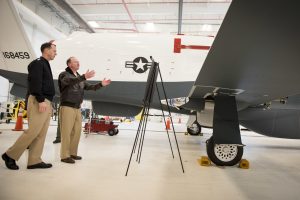
The engineers have been great and responsive but their ideas are not always applicable to the tactical situations which the crew experiences.
“Navy personnel have been extensively involved in the reality check of matching experiences with the new systems and sorted out the best way to make everything work to the tactical situation.”
He highlighted the importance of exercises and engagements at Red Flag and Fallon Naval Air Station as a key part of the learning process as well as the squadron became operational.
“The CNO has emphasized that a key effort is to focus upon electronic magnetic maneuver warfare and this platform fits right into that mission.
We are learning how better to work with other platforms in working in that mission space.”
He noted that as the P-8s is operating with the surface navy, there is growing recognition of what the P-8 brings to the fleet.
“They are very open to what we can bring to the fight.”
The fleet is facing a major challenge however in ensuring that you “get the right information to the right people at the right time.
“We have so many different platforms with so many different capabilities, with some short-range, some long-range, that it will be a challenge to understand the capabilities of all the different platforms and employ them appropriately so that you’re maximizing the effectiveness of your force in the battlespace.
We’re not analog anymore. We’re digital. With the digital era comes a massive amount of information.
And when you have all of these platforms with all of these capabilities that can do all of this fancy stuff, trying to get that information out in a timely manner, safely, and to the appropriate folks, is a challenge.
But, you know what? Luckily, I think we have the best military in the world and we will sort this out to our advantage.”
Editor’s Note: The P-8/Triton community is clearly one where experience is blended with youth.
A recent exercise with the Japanese and the P-8 community highlighted the nature of this community.
According to a June 1, 2016 article by the VP-8 PAO regarding working with the Japanese on ASW:
The “Fighting Tigers” of Patrol Squadron (VP) 8 participated in a Combined Maritime Patrol Operating Procedure (CMPOP) exercise May 24 with members from Japan Maritime Self Defense Force (JMSDF) Fleet Air Wing 5.
The objective of the CMPOP exercise was to improve anti-submarine warfare (ASW) readiness, increasing efficiency and interoperability between the two partner nations, in an effort to cohesively accomplish the same operational goals.
Lt. Clark Ross, a P-8A Poseidon pilot assigned to VP-8, spoke about the importance of participating in joint exercises with our long time regional partner.
“Conducting this exercise alongside our JMSDF allies allows us to tactically operate from the ‘same sheet of music’ while achieving our mutual objectives,” said Ross.
“I believe this exercise was a complete success, and I look forward to working alongside our Japanese counterparts again in the near future,” Ross added.
Due to its capabilities, effectiveness and reliability, the P-8A Poseidon represents a leap forward for the Maritime Patrol and Reconnaissance Force. The P-8A is a multi-mission aircraft that provides long-range maritime, intelligence, surveillance and reconnaissance (ISR) capabilities, making it the most advanced anti-submarine and anti-surface aircraft in the world.
VP-8 is currently deployed to Kadena Air Base in Okinawa, Japan in the 7th Fleet area of operations, conducting ISR missions and providing Maritime Domain Awareness to supported units throughout the Pacific theater.
In short, it is not just about the plane; it is not just about the software; it is about the leadership and the team on the aircraft and their ability to reachback to other platforms and assets in the battlespace to make timely and effective decisions in combat.
And for the MDA strike community, they are always involved in tron warfare, both a prelude and part of 21st century kinetic warfare.


